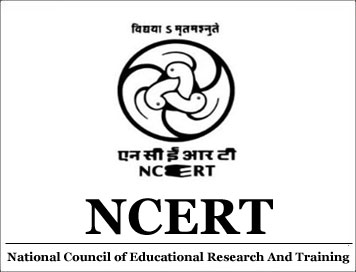(Download) NCERT Revised syllabus Of Science (Class 9 to 10 )
Rationale
The exercise of revising the syllabus for science and technology has been carried out with “Learning without burden” as a guiding light and the position papers of the National Focus Groups as points of reference. The aim is to make the syllabus an enabling document for the creation of textbooks that are interesting and challenging without being loaded with factual information. Overall, science has to be presented as a live and growing body of knowledge rather than a finished product.
Very often, syllabi – especially those in science – tend to be at once overspecified and underspecified. They are overspecified in that they attempt to enumerate items of content knowledge which could easily have been left open, e.g., in listing the families of flowering plants that are to be studied. They are underspecified because the listing of ‘topics’ by keywords such as ‘Reflection’ fails to define the intended breadth and depth of coverage. Thus there is a need to change the way in which a syllabus is presented.
The position paper on the teaching of science – supported by a large body of research on science education – recommends a pedagogy that is hands-on and inquiry-based. While this is widely accepted at the idea level, practice in India has tended to be dominated by chalk and talk methods. To make in any progress in the desired direction, some changes have to be made at the level of the syllabus. In a hands-on way of learning science, we start with things that are directly related to the child’s experience, and are therefore specific. From this we progress to the general. This means that ‘topics’ have to be reordered to reflect this. An example is the notion of electric current. If we think in an abstract way, current consists of charges in motion, so we may feel it should be treated at a late stage, only when the child is comfortable with ‘charge’. But once we adopt a hands-on approach, we see that children can easily make simple electrical circuits, and study several aspects of ‘current’, while postponing making the connection with ‘charge’. Some indication of the activities that could go into the development of a ‘topic’ would make the syllabus a useful document. Importantly, there has to be adequate time for carrying out activities, followed by discussion. The learner also needs time to reflect on the classroom experience. This is possible only if the content load is reduced substantially, say by 20-25%. Children are naturally curious. Given the freedom, they often interact and experiment with things around them for extended periods. These are valuable learning experiences, which are essential for imbibing the spirit of scientific inquiry, but may not always conform to adult expectations. It is important that any programme of study give children the needed space, and not tie them down with constraints of a long list of ‘topics’ waiting to be ‘covered’. Denying them this opportunity may amount to killing their spirit of inquiry. To repeat an oft-quoted saying: “It is better to uncover a little than to cover a lot.” Our ultimate aim is to help children learn to become autonomous learners.
Themes and Format
There is general agreement that science content up to Class X should not be framed along disciplinary lines, but rather organised around themes that are potentially cross-disciplinary in nature. In the present revision exercise, it was decided that the same set of themes would be used, right from Class VI to Class X. The themes finally chosen are: Food; Materials; The world of the living; How things work; Moving things; People and ideas; Natural phenomena and Natural resources. While these run all through, in the higher classes there is a consolidation of content which leads to some themes being absent, e.g. Food from Class X.
The themes are largely self-explanatory and close to those adopted in the 2000 syllabus for Classes VI-VIII; nevertheless, some comments may be useful. In the primary classes, the ‘science’ content appears as part of EVS, and the themes are largely based on the children’s immediate surroundings and needs: Food, Water, Shelter etc. In order to maintain some continuity between Classes V and VI, these should naturally continue into the seven themes listed above. For example, the Water theme evolves into Natural resources (in which water continues to be a sub theme) as the child’s horizon gradually expands. Similarly, Shelter evolves into Habitat, which is subsumed in The world of the living. Such considerations also suggest how the content under specific themes could be structured. Thus clothing, a basic human need, forms the starting point for the study of Materials. It will be noted that this yields a structure which is different from that based on disciplinary considerations, in which materials are viewed purely from the perspective of chemistry, rather than from the viewpoint of the child. Our attempt to put ourselves in the place of the child leads to ‘motion’, ‘transport’ and ‘communication’ being treated together as parts of a single theme: Moving things, people and ideas. More generally, the choice of themes – and sub themes – reflects the thrust towards weakening disciplinary boundaries that is one of the central concerns of NCF-2005.
